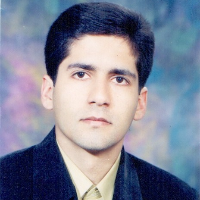Explanatory analysis of factors affecting urban morphology in a spontaneous tissue; A case study of Ziadlou neighborhood, Gorgan
Finding a phenomenon’s origin and initial formation process has always been one of the basic questions raised in all science branches, and urban morphology is a branch based on this motivation. Research on the origin of an unplanned urban area is not as easy as planned ones. Before the establishment of modern urbanism in Iran, most residential tissues had been formed during unplanned processes. Due to the lack of a comprehensive real estate registration system, there is no precise information about the division of urban lands and the construction of passages and buildings in residential alleys. In simpler terms, the origin of its formation is unknown. In the present study, a part of the intermediate urban form of Gorgan city is selected to identify the origin of a spontaneous residential tissue. It is attempted to discover all the events affecting its urban morphology from 1921 to 1974. Since this intermediate urban form is located between the historic tissue and the contemporary urban tissue, in terms of time, it is located between two different generations from the date of formation of the city (1921 to 1971). Consequently, it is cognate with the historic tissue patterns based on traditional society and its gradual development. Likewise, historically, it is more closely related to the research time, and it is easier to follow the developments and transformations in the samples than in the historical tissue. Thus, it facilitates receiving collective awareness of the formation process. Like any other urban tissue, the physical elements forming urban morphology in the intermediate urban form include roads, lots, and buildings. Nonetheless, the combination of these elements creates a comparatively discrete identity from the planned tissues. In the intermediate urban form, which is typically spontaneous, there are intertwined relationships between roads, lots, and buildings; as such, to separate these elements from each other is not as easy as a contemporary planned tissue. Accordingly, the present study aims to study the factors affecting the formation and deformation of each urban morphology element and their combination with each other to explain the entity and complexity of urban morphology in spontaneous tissues.
The research method of this paper is based on a qualitative approach. It is a combination of grounded theory reading (Systematic) and a comparative diachronical morphology. Hence, the data were extracted both from structured interviews and with the help of morphological development analysis techniques to compensate for the lack of written data by deriving oral data from the knowledge of the early residents of the tissue.
The city of Astarabad, now known as Gorgan, could be a good case for sampling in this study because Gorgan has never been the center of a caliphate or monarchy despite its long history of habitation. Thus, unlike a typical capital city, it did not face fast and unexpected transformations due to the establishment of military and administrative centers or large-scale migrations and maintained its natural growth rate over the years. Since the beginning of the present century, the city has been a regional-scale nucleus and has played an economic role in surrounding micro-settlements. The findings reveal that urban morphology factors act as a matrix pattern, and their effectiveness does not correspond to a linear process. The components of this matrix consist of three areas: actors, action/interaction, and conditions, each of which includes a set of influential categories and has its types and dimensions. Individuals, families, and the local community are considered the most effective actors. Regarding action/interaction, property rights to land division, the agreement between the rights holders and the legal system are recognized as the most effective factors. The most important underlying conditions are climate, land economy, and household, respectively.
As a result, the urban form is shaped by conscious individual/family choices, social interactions, and the legal system; That is, the will and ownership choice in the formation and development of the urban fabric has played a more prominent role than laws and regulations. So that from the micro-level (individual) to the macro-level (legal system), the degree of effectiveness is gradually reduced and, in turn, prevents the formation of a top-down linear pattern. Moreover, the existing terrain, in an artificial or a natural form, plays a key role in urban morphology. Generalizing the results of this paper requires adopting a phenomenological approach to the analysis of each category obtained at the level of dimensions and characteristics, which requires another study. However, the generalizability of the results to other cities in Iran requires more comparative research, so there is a need to study more and more diverse examples from different cities along with this research.
- حق عضویت دریافتی صرف حمایت از نشریات عضو و نگهداری، تکمیل و توسعه مگیران میشود.
- پرداخت حق اشتراک و دانلود مقالات اجازه بازنشر آن در سایر رسانههای چاپی و دیجیتال را به کاربر نمیدهد.


